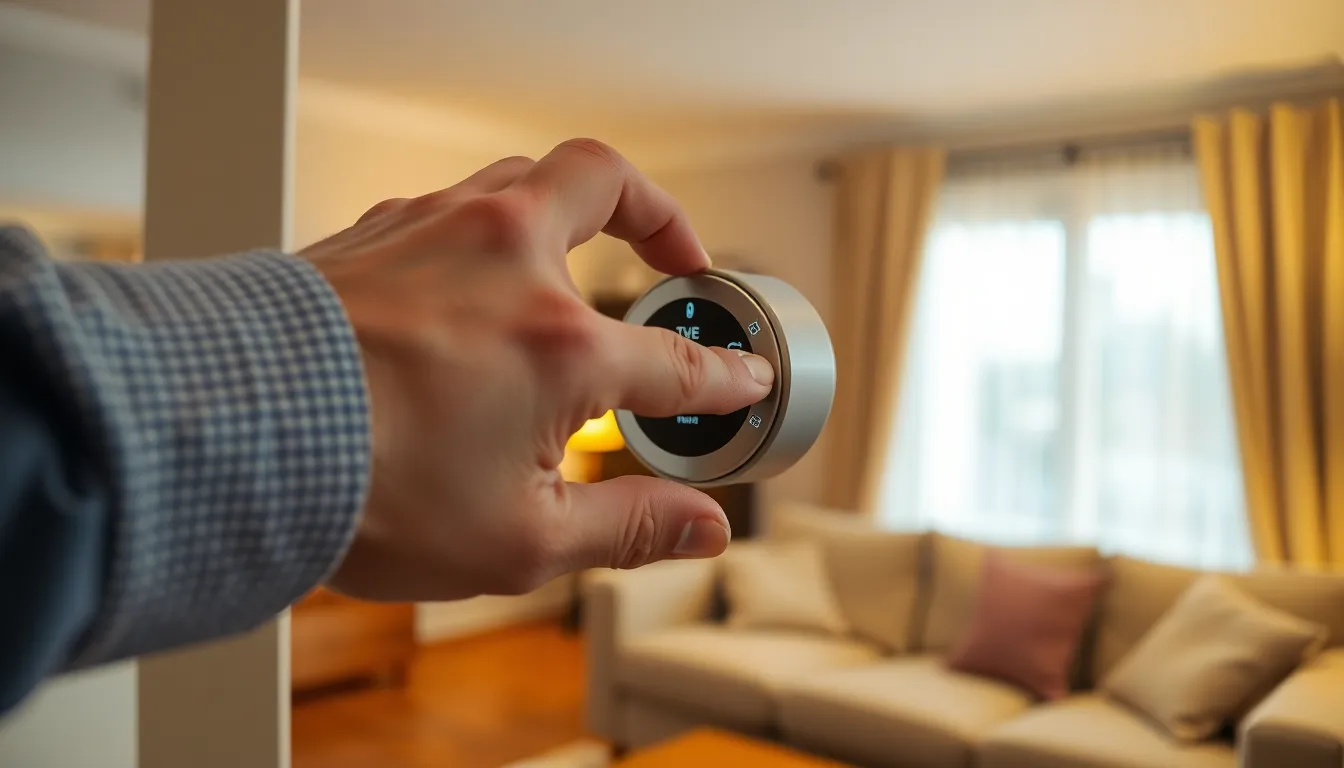In a world where every gadget seems to have a mind of its own, mastering control device usage is like becoming a wizard in a tech-filled realm. Imagine effortlessly commanding your smart home devices with a flick of your wrist or a simple voice command. It’s not just convenient; it’s downright magical!
Table of Contents
ToggleOverview Of Control Device Usage
Control device usage has surged as smart home technology gains widespread adoption. Understanding the functionalities of these devices ensures users optimize convenience and efficiency. Many households now incorporate multiple smart devices, making their management crucial.
Voice-activated speakers serve as central hubs for controlling various devices. Users can easily command lights, thermostats, or security systems with simple phrases. Integration with smartphone apps enhances user interactions, allowing remote management from virtually anywhere.
Connectivity plays a vital role in seamless operation. Wi-Fi or Bluetooth connections enable devices to communicate effectively. Several platforms, such as Google Home and Amazon Alexa, facilitate compatibility among different smart devices, promoting a unified experience.
Data privacy also represents a significant consideration in smart device usage. Manufacturers implement security measures, yet users must stay vigilant about personal data handling. Regular software updates and strong passwords contribute to maintaining device security.
User feedback influences advancements in control device technology. Manufacturers continually adapt to ensure user-friendly interfaces, responding to needs and preferences. Customization options, including personalized settings and routines, enhance user experience further.
Training and tutorials help users maximize the potential of their devices. Many online resources offer step-by-step guidance, aiding in troubleshooting common issues. Support communities can also provide valuable insights and tips for optimal usage.
Embracing control device technology transforms daily routines, making home management efficient and enjoyable. Adopting these devices encourages households to harness the benefits of automation for better living.
Types Of Control Devices

Understanding various types of control devices enhances user experience and efficiency. These devices generally fall into two main categories: manual control devices and automated control devices.
Manual Control Devices
Manual control devices require physical interaction for operation. Switches, knobs, and sliders exemplify this category, offering immediate feedback. Users can adjust lighting levels, volume settings, or temperature directly. These devices often feature straightforward designs, making them intuitive for daily tasks. A common example is a traditional thermostat, allowing manual temperature adjustments. Users appreciate the reliability and simplicity these devices provide, especially during power outages or network failures.
Automated Control Devices
Automated control devices operate without continuous manual input. Smart plugs, automated blinds, and central hubs illustrate this type, improving convenience and efficiency. Voice commands or app integrations often control these devices, allowing for remote management. Users can schedule operations, such as setting lights to turn on at sunset. Automation enhances energy savings, optimizing routines for busy households. Platforms like Google Home and Amazon Alexa facilitate synchronization across devices, ensuring seamless interactions and user satisfaction.
Benefits Of Control Device Usage
Control devices enhance convenience, elevating the smart home experience. Mastering their functions leads to numerous benefits, including increased efficiency and improved safety.
Enhanced Efficiency
Smart devices streamline daily tasks, making routines smoother. Automating household functions allows users to manage everything from lighting to heating with simple commands. Devices connected through Wi-Fi can optimize energy use, reducing waste and lowering utility bills. Scheduling settings enables homes to adapt to users’ lifestyles, ensuring that lights and thermostats work only when needed. Enhanced integration among devices also minimizes the time spent on manual tasks, freeing users to focus on more important activities.
Improved Safety
Control devices contribute to household safety by providing better monitoring and surveillance. Security cameras and alarms connected to smart platforms notify users of any unusual activity in real-time. Automated lighting can deter potential intruders by mimicking an occupied home. Voice commands offer quick access to emergency services, ensuring swift responses when needed. Regular software updates maintain device security, while users can customize alerts for different scenarios, enhancing overall peace of mind.
Challenges In Control Device Usage
Numerous challenges affect the effective usage of control devices. Both technical limitations and user adaptability play crucial roles in determining overall user experience.
Technical Limitations
Technical limitations hinder the seamless operation of control devices. Connectivity issues often arise from Wi-Fi disruptions or Bluetooth incompatibility. Device compatibility presents another challenge as not all devices integrate with popular platforms like Google Home or Amazon Alexa. Additionally, battery life can impact performance, especially for portable or wireless devices. Manufacturers aim to improve functionality through software updates, yet these updates may not reach every device in a timely manner. A lack of standardization among device protocols also complicates interactions, leaving users frustrated when attempting to control multiple devices simultaneously.
User Adaptability
User adaptability poses significant challenges in control device usage. Many individuals find it difficult to transition from traditional devices to automated options. Familiarity with manual controls often leads to resistance toward adopting new technology. Users may struggle with understanding voice commands or app interfaces, which can result in incorrect operations. Moreover, variability in user preferences complicates the design of universally appealing interfaces. Training programs or tutorials may alleviate these issues, yet not all users seek assistance. Adapting to evolving technology demands a willingness to learn, creating barriers for those less tech-savvy.
Future Trends In Control Device Usage
Integration of artificial intelligence significantly shapes the future of control devices. AI enhances user experience by learning individual preferences and adapting to daily routines. Personalization improves over time, making interactions with devices more intuitive.
Voice activation is expected to evolve. It’ll incorporate more natural language processing, allowing devices to understand context and intent better. This change paves the way for more fluid conversations between users and technology.
In addition, interoperability among control devices will increase. Standards are emerging for multi-device compatibility, easing frustrations associated with connectivity issues. This development ensures that users can manage various gadgets from different manufacturers seamlessly.
Augmented reality and virtual reality influence control device experiences too. Users may manipulate devices in virtual spaces, providing an engaging method to interact with technology. Features like visual overlays will offer real-time information about system status and performance.
Moreover, energy efficiency gains importance. As households become more conscious of sustainability, smart devices will focus on reducing energy consumption. Control systems will optimize energy use based on real-time data, helping users lower bills while minimizing environmental impact.
Data security will continue to be a critical focus. Manufacturers will prioritize robust encryption and security protocols to protect user data. Increased transparency about data handling practices will help build trust among consumers.
Finally, user education initiatives are likely to expand. Tutorials and training programs will emerge, targeting less tech-savvy individuals. With these resources, users will better understand the capabilities and features of control devices, resulting in higher adoption rates.
Mastering control device usage is essential in today’s tech-driven world. As smart home technology evolves it offers unparalleled convenience and efficiency for households. Embracing these innovations not only simplifies daily tasks but also enhances safety and energy savings.
However users must remain aware of potential challenges such as connectivity issues and data privacy concerns. Staying informed about best practices for security and seeking out educational resources can help users fully leverage the benefits of these devices.
Looking ahead the integration of AI and emerging technologies promises to further enrich the user experience. By adapting to these advancements individuals can transform their homes into more efficient and enjoyable living spaces.

